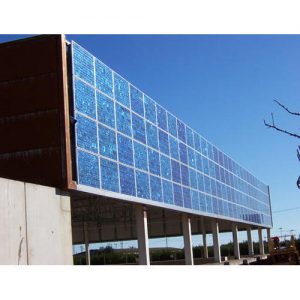Building Integrated PV Design
In the face of the urgent need to renovate and decarbonize the existing building stock, special focus is on building skins, such as roofs and facades, to make them more efficient through innovative solutions and materials, but also to generate energy.
As building codes drive deeper adoption of solar power, commercial building owners face some unique challenges. But building-integrated photovoltaics (BIPV) can efficiently solve some of those issues.
Building-integrated photovoltaics (BIPV) are dual-purpose, as they serve as the outer layer of a structure and also generate  electricity for on-site use or export to the grid.
electricity for on-site use or export to the grid.
BIPVs take many shapes
Solar panels can be integrated into various parts of the building, and often will be invisible to casual bypassers.
- Façade. Solar panels of semi-transparent thin-film or crystalline solar panels can replace or cover traditional glass windows. Because of their location and orientation, these panels produce less electricity than rooftop panels but may offer a larger surface area to make up the difference. For retrofits, solar panels can cover outdated and unattractive exteriors.
- Glazing. Skylights and greenhouses that allow daylight to penetrate and generate electricity are made with ultra-thin solar
 cells.
cells.
PV modules can be integrated into building components such as awnings and may serve as the structure as in the case of bus shelters and parking lots covers. In dense urban areas where land is expensive and rooftops are small, BIPVs offer the best option to incorporate renewable energy into a building.
Solar power capacity can be retrofitted
Usually, building-integrated PV systems are part of the architectural design stage and added during initial construction. Building-added PV (BAPV) is planned and built during a retrofit.
Both systems can provide savings in materials and electricity costs, reduce pollution, and add to the architectural appeal of a building. Substituting PV for standard materials allows builders to reduce the incremental cost of PV systems and eliminate costs and design issues for separate mounting systems.
DDSE has the experience and certifications and we’re always happy to help. If you’re about to embark on a solar installation project, be sure to give us a call.